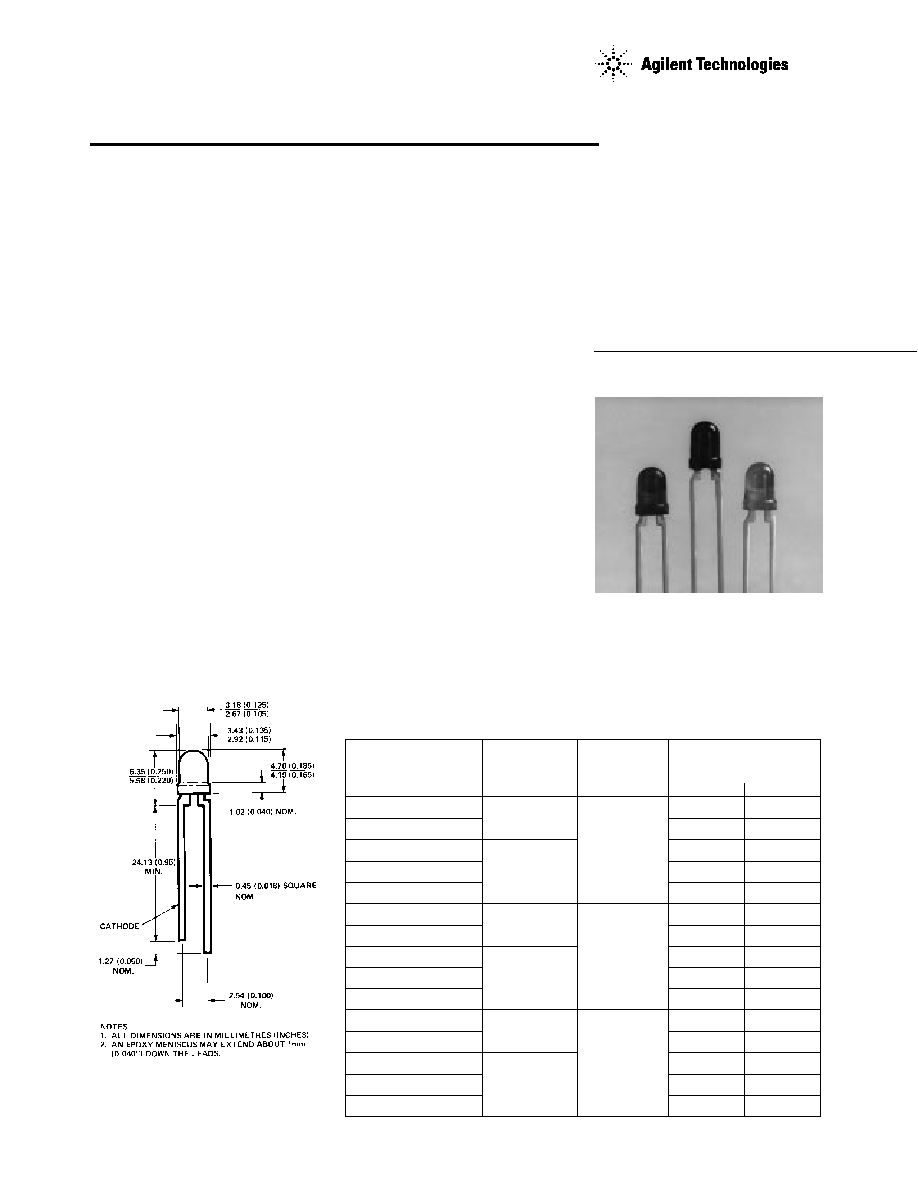
T-1 (3 mm) High Intensity
LED Lamps
Technical Data
Features
∑ High Intensity
∑ Choice of 3 Bright Colors
High Efficiency Red
Yellow
High Performance Green
∑ Popular T-1 Diameter
Package
∑ Selected Minimum
Intensities
∑ Narrow Viewing Angle
∑ General Purpose Leads
∑ Reliable and Rugged
∑ Available on Tape and Reel
∑ For more information,
please refer to Tape and
Reel Option Data Sheet
Description
This family of T-1 lamps is
specially designed for applica-
tions requiring higher on-axis
intensity than is achievable with a
standard lamp. The light
generated is focused to a narrow
beam to achieve this effect.
HLMP-132x Series
HLMP-142x Series
HLMP-152x Series
Package Dimensions
Selection Guide
Luminous Intensity
Part
Package
Iv (mcd) @ 10 mA
Number
Description
Color
Min.
Max.
HLMP-1320-G00xx
8.6
≠
HLMP-1320 GH0xx
8.6
27.6
HLMP-1321
8.6
≠
HLMP-1321-G00xx
8.6
≠
HLMP-1321-HI0xx
13.8
44.0
HLMP-1420
9.2
≠
HLMP-1420-F00xx
9.2
≠
HLMP-1421
9.2
≠
HLMP-1421-F00xx
9.2
≠
HLMP-1421-FG0xx
9.2
29.4
HLMP-1520
6.7
≠
HLMP-1520-E00xx
6.7
≠
HLMP-1521
6.7
≠
HLMP-1521-E00xx
6.7
≠
HLMP-1521-EF0xx
6.7
21.2
High
Efficiency
Red
Untinted,
Nondiffused
Tinted,
Nondiffused
Yellow
Microtinted,
Nondiffused
Tinted,
Nondiffused
Microtinted,
Nondiffused
Tinted,
Nondiffused
Green
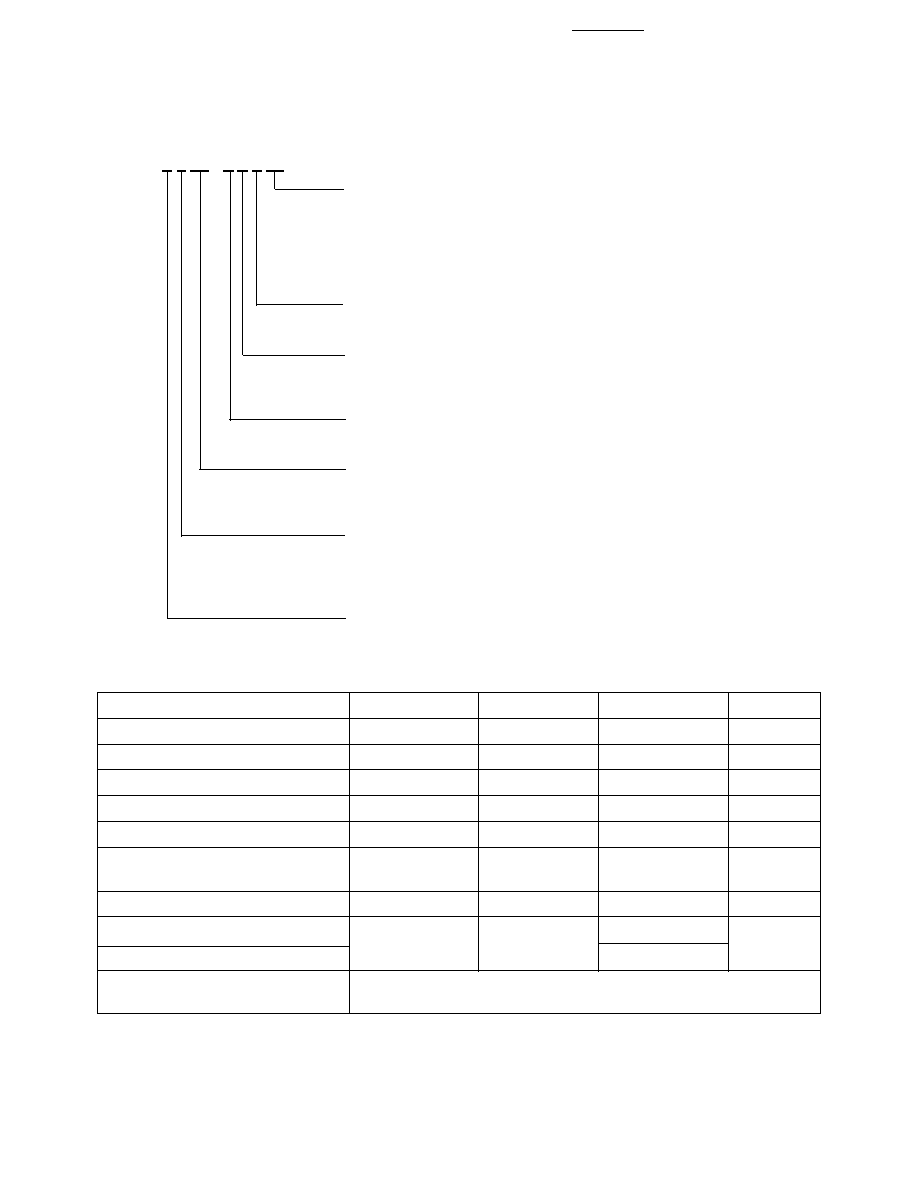
2
Absolute Maximum Ratings at T
A
= 25
∞
C
Parameter
Red
Yellow
Green
Units
Peak Forward Current
90
60
90
mA
Average Forward Current
[1]
25
20
25
mA
DC Current
[2]
30
20
30
mA
Power Dissipation
[3]
135
85
135
mW
Reverse Voltage (I
R
= 100
µ
A)
5
5
5
V
Transient Forward Current
[4]
500
500
500
mA
(10
µ
sec Pulse)
LED Junction Temperature
110
110
110
∞
C
Operating Temperature Range
-55 to +100
-55 to +100
-20 to +100
∞
C
Storage Temperature Range
-55 to +100
Lead Soldering Temperature
260
∞
C for 5 seconds
[1.6 mm (0.063 in.) from body]
Notes:
1. See Figure 5 (Red), 10 (Yellow), or 15 (Green) to establish pulsed operating conditions.
2. For Red and Green series derate linearly from 50
∞
C at 0.5 mA/
∞
C. For Yellow series derate linearly from 50
∞
C at 0.2 mA/
∞
C.
3. For Red and Green series derate power linearly from 25
∞
C at 1.8 mW/
∞
C. For Yellow series derate power linearly from 50
∞
C at
1.6 mW/
∞
C.
4. The transient peak current is the maximum non-recurring peak current that can be applied to the device without damaging the LED
die and wirebond. It is not recommended that the device be operated at peak currents beyond the peak forward current listed in the
Absolute Maximum Ratings.
Part Numbering System
HLMP - 1 x xx - x x x xx
Mechanical Option
00: Bulk
01: Tape & Reel, Crimped Leads
02: Tape & Reel, Straight Leads
A1: Right Angle Housing, Uneven Leads
A2: Right Angle Housing, Even Leads
Color Bin Options
0: Full Color Bin Distribution
Maximum Iv Bin Options
0: Open (no max. limit)
Others: Please refer to the Iv Bin Table
Minimum Iv Bin Options
Please refer to the Iv Bin Table
Lens Options
20: Untinted or Microtinted, Non-diffused
21: Tinted, Non-diffused
Color Options
3: GaP HER
4: GaP Yellow
5: GaP Green
Package Options
1: T-1 (3 mm)
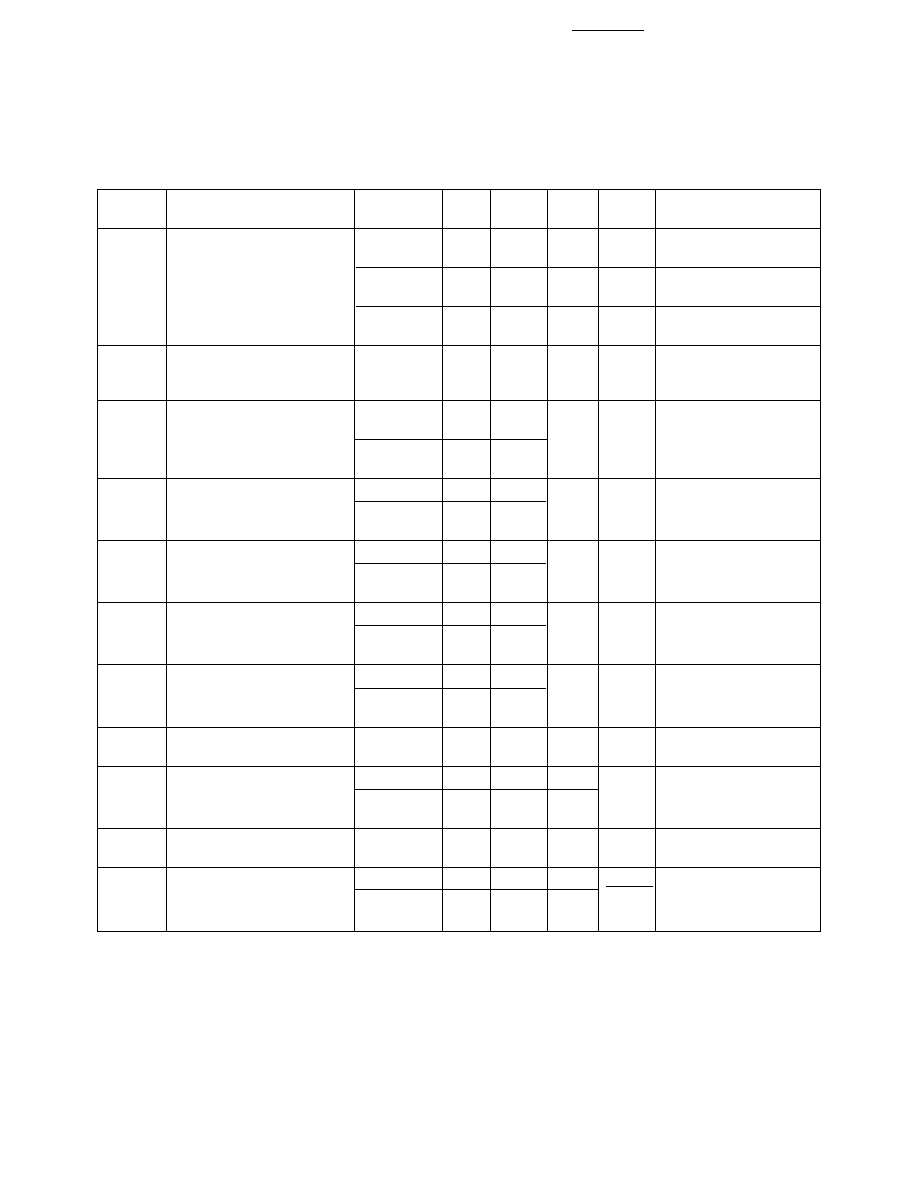
3
Notes:
1.
1
/
2
is the off-axis angle at which the luminous intensity is half the axial luminous intensity.
2. The dominant wavelength,
d
, is derived from the CIE chromaticity diagram and represents the single wavelength which defines the
color of the device.
3. Radiant intensity, I
e
, in watts/steradian, may be found from the equation I
e
= l
v
/
v
, where l
v
is the luminous intensity in candelas
and
v
is the luminous efficacy in lumens/watt.
Electrical Characteristics at T
A
= 25
∞
C
Device
Test
Symbol
Description
HLMP-
Min.
Typ.
Max.
Units
Conditions
I
V
Luminous Intensity
1320
8.6
30
mcd
I
F
= 10 mA
1321
8.6
30
(Figure 3)
1420
9.2
15
mcd
I
F
= 10 mA
1421
9.2
15
(Figure 8)
1520
6.7
22
mcd
I
F
= 10 mA
1521
6.7
22
(Figure 3)
2
1
/
2
Including Angle Between
All
45
Deg.
I
F
= 10 mA
Half Luminous Intensity
See Note 1
Points
(Figures 6, 11, 16, 21)
PEAK
Peak Wavelength
132x
635
nm
Measurement
at Peak (Figure 1)
142X
583
152X
565
1/2
Spectral Line Halfwidth
132x
40
nm
142X
36
152X
28
d
Dominant Wavelength
132x
626
nm
See Note 2 (Figure 1)
142X
585
152X
569
s
Speed of Response
132x
90
ns
142X
90
152X
500
C
Capacitance
132x
11
pF
V
F
= 0; f = 1 MHz
142X
15
152X
18
R
J-PIN
Thermal Resistance
All
290
∞
C/W
Junction to
Cathode Lead
V
F
Forward Voltage
132x
1.9
2.4
V
I
F
= 10 mA
142X
2.0
2.4
152X
2.1
2.7
V
R
Reverse Breakdown
All
5.0
V
I
R
= 100
µ
A
Voltage
V
Luminous Efficacy
132x
145
lumens
See Note 3
142X
500
Watt
152X
595
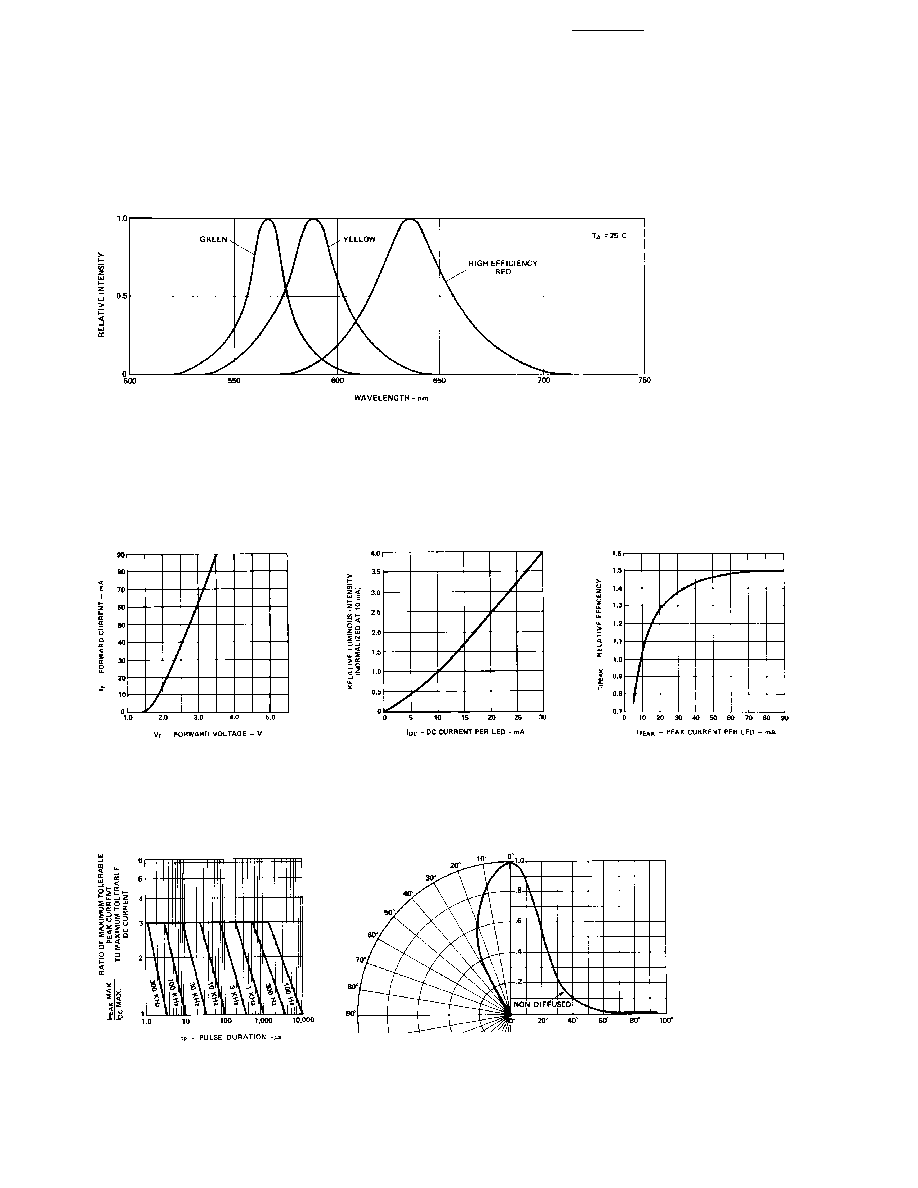
4
Figure 3. Relative Luminous Intensity
vs. DC Forward Current.
Figure 2. Forward Current vs.
Forward Voltage Characteristics.
Figure 4. Relative Efficiency
(Luminous Intensity per Unit
Current) vs. Peak LED Current.
Figure 5. Maximum Tolerable Peak
Current vs. Pulse Duration. (I
DC
MAX
as per MAX Ratings).
Figure 6. Relative Luminous Intensity vs. Angular Displacement.
Figure 1. Relative Intensity vs. Wavelength.
T-1 High Efficiency Red Non-Diffused
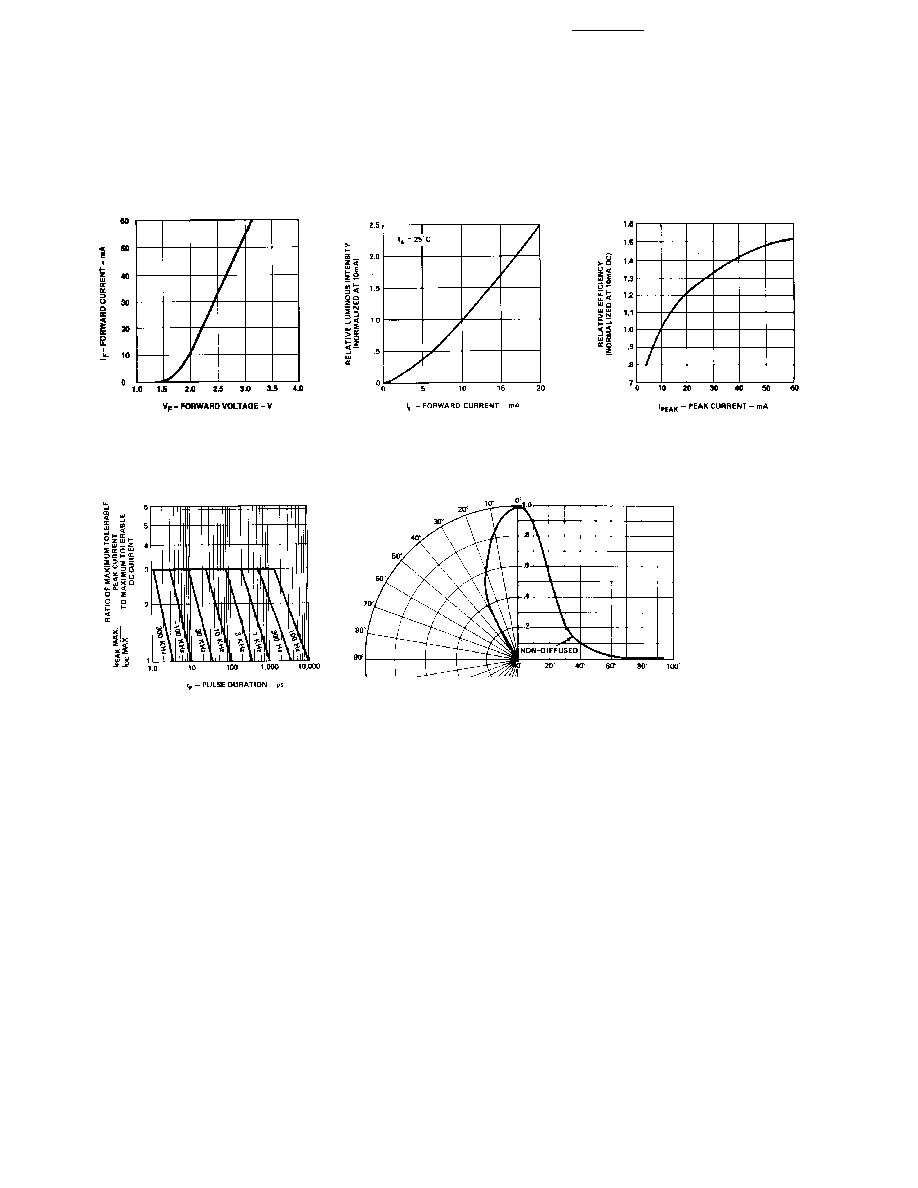
5
T-1 Yellow Non-Diffused
Figure 10. Maximum Tolerable Peak
Current vs. Pulse Duration. (I
DC
MAX
as per MAX Ratings).
Figure 11. Relative Luminous Intensity vs. Angular Displacement.
Figure 8. Relative Luminous Intensity
vs. Forward Current.
Figure 7. Forward Current vs.
Forward Voltage Characteristics.
Figure 9. Relative Efficiency
(Luminous Intensity per Unit
Current) vs. Peak Current.




